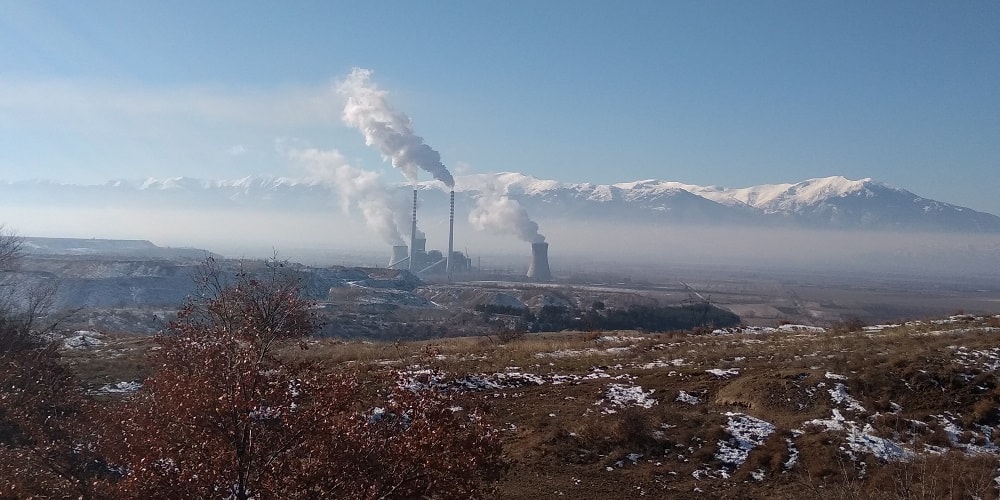Two out of three scenarios in the country’s groundbreaking draft Energy Strategy foresee a coal exit by 2025 – excellent news in a country traditionally dominated by coal-fired electricity. But the Strategy’s plans for hydropower are unrealistic, writes Nevena Smilevska.
Nevena Smilevska, Programme coordinator for climate, Eko-svest | 5 December 2019

Its new draft Energy Strategy is the first in the Western Balkans to put a clear date on phasing out coal – all the more surprising considering that lignite has been responsible for over half the country’s electricity generation in recent years.
That two out of three scenarios consider a coal phase-out by 2025 to be the least cost option show just how much of a liability coal has become in the last few years. Oslomej, the country’s smaller plant, is rarely used even now, while the much larger Bitola plants requires sizeable investments to bring it into line with pollution control standards.
Adopting a phase-out by 2025 as official government policy will put the country in a leading position among its peers in the region and provide a positive and clear signal about the country’s future energy direction.
In line with recent price trends for solar and wind, the draft Strategy sees significant increases in these sectors, especially for solar, where there is more potential.
However there are some areas where the draft Strategy still needs work.
In the power sector, this mostly relates to hydropower. In all three scenarios, modelling selected up to 775 MW of new large hydropower plants and 223 MW of small ones.
We welcome the fact that the notorious Boškov Most and Lukovo Pole hydropower plants planned in the Mavrovo National Park have been excluded from the Strategy, but we also find it highly unlikely that all the remaining candidates will be built.
Harmonisation with existing EU environmental legislation will almost certainly put some of these projects out of bounds, while others have been stalled for years due to lack of economic justification or interest from investors.
Veles, Gradec and Chebren are all encroaching on future Natura 2000 sites and they are also in conflict with Emerald Sites, Important Plant Areas and Important Bird Areas, and previous tenders for Chebren have failed to attract investors. All these issues, together with the 15 km-long Tenovo to Kozjak hydropower plant tunnel that is planned right underneath a newly constructed gas pipeline, could seriously undermine the implementation of the Strategy.
The figures on new small hydropower development are mixed and unclear, so it is difficult to follow what exactly is planned, but it is clear that 223 MW of new hydropower cannot be built in the country without serious damage to protected areas and other valuable watercourses. Already now, with just 96 small hydropower plants built and operational, the situation is untenable.
We say this not only because we have witnessed how uncontrolled hydropower development is destroying the Balkans’ main asset – its natural beauty and biodiversity – but because it is generally unwise to put all one’s eggs in one basket. As the latest data from the Energy Community Renewable Energy Coordination Group shows, the country is in danger of not meeting the 2020 renewables targets due to the impact of hydrology, among other things, so diversification is of utmost importance.
If the Strategy has three scenarios, there need to be different scenarios of hydropower development too, to answer the question of what are the trade-offs needed and what is plan B in case some of the projects fail?
The other issue that the Strategy struggles with is decarbonisation outside of the power sector.
It expects high levels of diesel usage to persist in transport, without really explaining why and what the alternatives could be. Considering that diesel not only has climate impacts but is also harmful from an air quality perspective, alternatives really need to be presented. The country is an air quality blackspot on a global scale, and continuing the status quo is not an option.
A large increase in the use of gas in industry is expected in the Strategy, which is counterintuitive considering EU decarbonisation ambitions and the fact that all gas in the country is imported. Again, it needs to be explored what the alternatives are and to what extent there is a danger of stranded assets if this expected rise in consumption does not materialise.
Energy savings and demand-side efficiency are given a reasonable amount of attention in the Strategy, but we cannot underline enough the need to use the opportunities in this field to the maximum extent possible. This is the key to reducing the country’s import dependency as well as reducing the need for new energy infrastructure.
Overall, the draft Strategy is a large step forward from what we have previously seen in the region, and with some more work on the issues above, it can lay the ground for a real transformation of the country’s energy sector and become a guiding light for the rest of the region. This is a great opportunity, but also a great responsibility.
Getting it right can encourage investors, prosumers, and our neighbouring countries to get involved in the energy transition. Getting it wrong can put others off of trying and ruin the whole image of the energy transition, just as we are currently seeing with the small hydropower boom across the region. We hope the Government will understand this when considering public comments and take them on board to make it a Strategy we can all get behind.
Never miss an update
We expose the risks of international public finance and bring critical updates from the ground – straight to your inbox.
Tags: coal | energy strategy | solar
